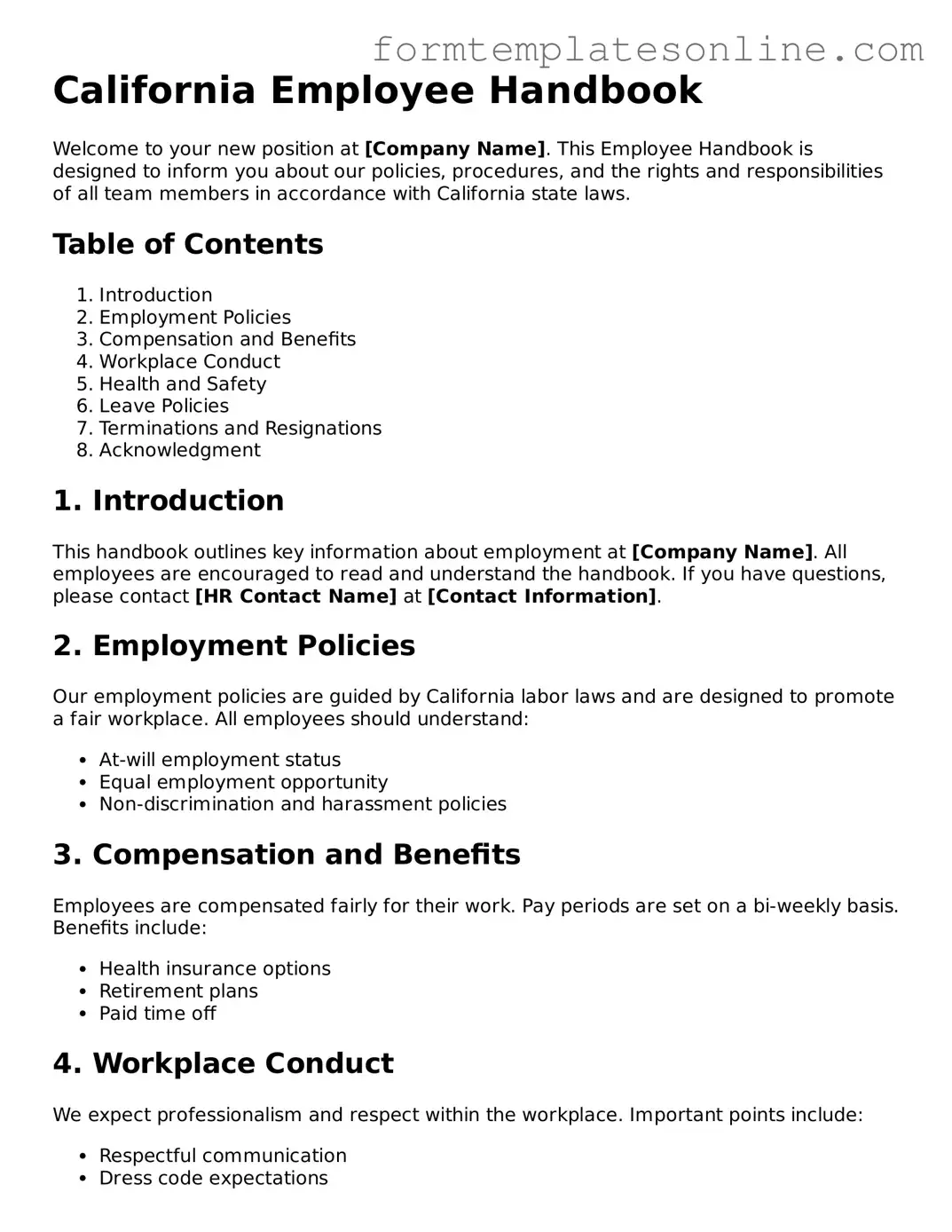California Employee Handbook
Welcome to your new position at [Company Name]. This Employee Handbook is designed to inform you about our policies, procedures, and the rights and responsibilities of all team members in accordance with California state laws.
Table of Contents
- Introduction
- Employment Policies
- Compensation and Benefits
- Workplace Conduct
- Health and Safety
- Leave Policies
- Terminations and Resignations
- Acknowledgment
1. Introduction
This handbook outlines key information about employment at [Company Name]. All employees are encouraged to read and understand the handbook. If you have questions, please contact [HR Contact Name] at [Contact Information].
2. Employment Policies
Our employment policies are guided by California labor laws and are designed to promote a fair workplace. All employees should understand:
- At-will employment status
- Equal employment opportunity
- Non-discrimination and harassment policies
3. Compensation and Benefits
Employees are compensated fairly for their work. Pay periods are set on a bi-weekly basis. Benefits include:
- Health insurance options
- Retirement plans
- Paid time off
4. Workplace Conduct
We expect professionalism and respect within the workplace. Important points include:
- Respectful communication
- Dress code expectations
- Use of company resources
5. Health and Safety
Your safety is a priority. Follow these guidelines:
- Report any unsafe conditions
- Participate in safety training
- Understand emergency procedures
6. Leave Policies
Employees are entitled to various leave types. This includes:
- Paid sick leave
- Family leave
- Jury duty leave
7. Terminations and Resignations
The process for leaving the company is straightforward. Employees should follow these steps:
- Provide written notice
- Return company property
- Complete exit interviews if applicable
8. Acknowledgment
Please sign below to acknowledge that you have received and read the Employee Handbook:
_____________________________ [Employee Name]
Date: ________________
For any further queries, please do not hesitate to reach out to [HR Contact Name].
